Against a backdrop of soaring prices, The Grocer charged five creative agencies with pitching dairy products Brits would be happy to pay more for
What’s the price of a pint of milk?
It’s a question often posed to politicians, their stuttered answers a handy barometer for just how out of touch they supposedly are. Indeed, when he was mayor of London, Boris Johnson guessed “about 80p or something like that”, while the reality was about half the amount.
That was in 2013, though. Nowadays, such has been the pace of inflation on dairy products in recent months, you’d be forced to forgive even the most down-to-earth members of parliament for not having a clue what that week’s price might be. And don’t bother asking about the cost of cheddar, butter or yoghurt, either.
After all, according to an August analysis by Assosia, more than 160 fresh milk and butter lines rose in price in a six-week period. The biggest was a 45% hike to £1.45 per litre of Arla’s Cravendale in Asda. It followed a flurry of over 110 price rises among key own label lines in July, meaning two pints now cost the same price as four did at the start of the year.
It’s a dilemma leaving many dairy farmers asking themselves some seriously tough questions.
Earlier this year, the NFU reported soaring costs were forcing many farmers to make substantial changes – and putting others out of business.
According to its research, 7% of producers believe they are likely to stop producing milk by 2024. Nationally, this could mean 840 producers leaving the industry. Topping their list of concerns are the rising costs of feed (93%), fuel (91%), energy (89%) and fertiliser (88%).
“Farming has always been a volatile business,” says NFU president Minette Batters. “But with fertiliser prices doubling, feed and fuel prices rising, and the variable weather, the decisions farmers are making now will feel more like a gamble than ever before.”
So, with inflation expected only to continue to rise, it raises a question: could dairy be pushed into the luxury end of the grocery market? And if so, could that hold opportunity to provide both consumers and farmers with extra bang for their buck?
That direction of travel is already gaining traction, after all. According to Global Trade Tracker figures, though retail sales of EU dairy have remained largely static since 2013, specialist premium products have bucked that trend – be it lactose-free, organic or grass-fed.
As a result, nearly a fifth (19.2%) of dairy launches in western Europe carry an ‘organic’ claim, up from 12.6% five years ago.
Meanwhile, specialist lactose-free products now occupy 16.6% of market share, and grass-fed products have doubled.
“From a producer’s perspective, the more value you can add to your raw material the better,” sums up Jukka Likitalo, head of the European Association of Dairy Trade.
With that in mind, The Grocer challenged five creative agencies to come up with ideas about what a premium, value-added dairy product could look like.
To do so, they drew on macro trends, such as wellness and sustainability, to convey premium cues. Finished concepts range from artisan cheeses sold through subscription services, to high-end restaurant butters and refillable milk shots.
Each one adds clear value for the consumer, justifies a premium – sometimes luxury – price point, and often fulfils the added role of creating greater connection between dairy farmers and their end customers. It’s important given the need to support UK agriculture during this tough time.
Fun, original and hopefully a bit of inspiration for the UK dairy industry, here’s exactly what they came up with.
Mellow Dawn
“We live in a full-on, never-off society, which means it is ever more difficult to turn off our devices and enjoy the comfort and experience of relaxation and tranquillity,” says Elliot Wilson, strategy director at The Cabinet.
“Combine this with the ever-expanding western sleeplessness pandemic and we need to change the way we live our lives and readdress the foods we consume.”
This idea underpins Mellow Dawn, a 100% grass-fed milk naturally high in sleep-inducing melatonin. Inspired by a “super niche” product already available in Japan, special husbandry techniques (such as milking cows at dawn – hence the brand name) give the milk its increased levels of the functional ingredient, which has been shown to help facilitate calm and even doziness.
With its cool white bottles and calming colour palette, Mellow Dawn will be pitched as an ultra-premium product that elevates simple cows milk into a sought-after luxury.
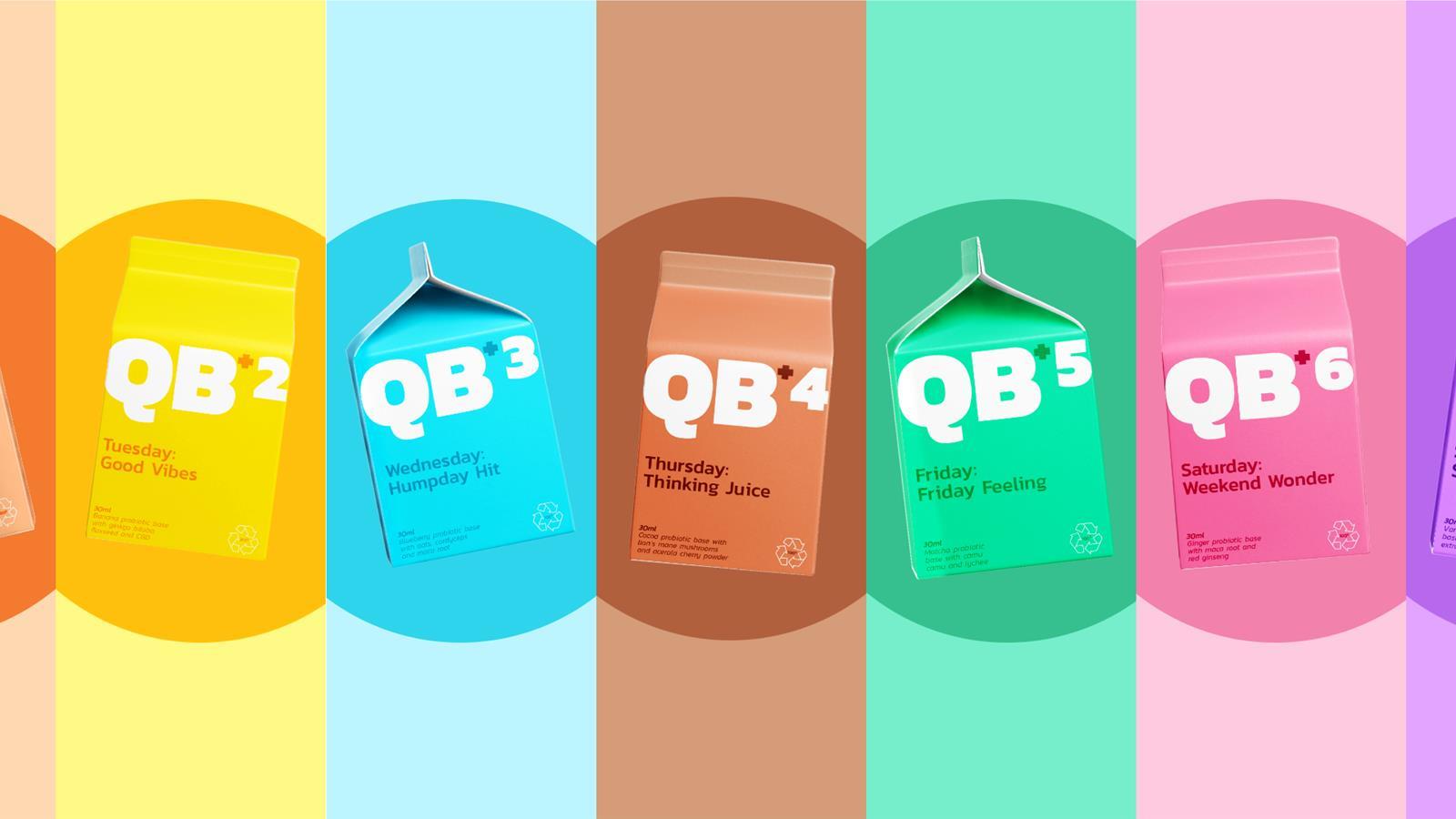

QB+
Few things are more on trend than gut health right now, as consumers get to grips with the link between their insides and, well, pretty much everything else.
Busy lives often remain a barrier to acting on this knowledge, though – leaving a gap for an ultra-convenient, dairy-based solution to meet demand for ‘good’ bacteria.
Enter fun, colourful QB+ (pronounced ‘Cube-ee’): a range of stackable, sustainable probiotic booster shots tailored to the days of the week.
“QB+ is an everyday probiotic with personality,” explains Fiona Carmichael, associate director at Citypress, which dreamed up the concept. “It gives time-strapped young adults an easy, enjoyable way to look after their bodies and benefit from a dose of good bacteria,” she adds.
Though the probiotic base is the same in each of the seven 30ml shots, each day brings with it a new flavour, colour palette and added functional ingredients.
Thursday’s ‘Thinking Juice’, for instance, pairs its cocoa probiotic dairy base with lion’s mane mushrooms and acerola cherry powder – both thought to boost cognitive performance.
As well as its packs being made from recycled materials – another key criterion for the target young adult demographic – the inverted base of the QB+ shots means they can be easily stacked in rows, making them easy to merchandise in the chiller.
“Inspired by the rise in subscription services we’ve seen during the pandemic, with QB+, consumers can outsource decision making about their health and benefit from more consistency – with a convenient, one-size-slurps-all solution,” sums up Carmichael.
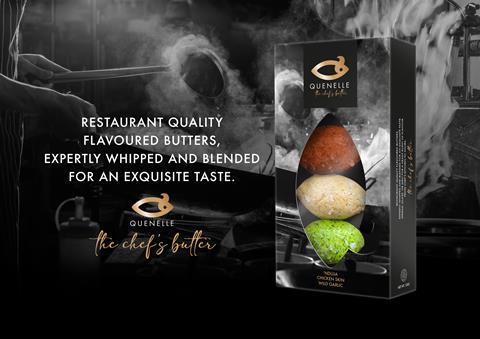
Quenelle
Quenelle draws its inspiration from a trend already established in high-end hospitality: posh flavoured butters.
From Marmite to wild garlic and truffle flavours, chefs around the world are already using elaborate infusions to upcycle butter on menus. Chef influencers such as Thomas Straker have been going a step further and creating viral butter concoctions imitating the likes of Bloody Mary cocktails, videos of which have turned into overnight sensations, raking in a million views on average.
In fact, Spinnaker carried out social listening and tracked that videos tagged #ButterTok received just over 280 million views on TikTok (the number’s now even higher; see p66).
The agency spotted a clear gap in the market to take this hospitality trend into grocery.
Hence Quenelle, a range of luxury, flavoured, restaurant-quality butter – so named for the serving technique used in professional kitchens to give butter that signature oval shape on the plate.
It would launch in the autumn in wild garlic, chicken skin and ’nduja flavours, drawing on what’s in season and what’s on trend.
‘The chef’s butter’ strapline underpins the marketing of Quenelle, to align it with restaurant-quality products.
Over time, the range – which sports premium packaging – would grow to include a greater breadth of flavours, and single-serve formats as well as multipacks.
“With dining out reducing due to the cost of living, these chef-style luxury butters appeal to restaurant guests and home cooks who want to elevate their meals when cooking at home,” explains Spinnaker associate director Debs Croshaw.
Wild Rind
Designed to “radically change the relationship between consumers, land and produce”, Wild Rind is a DTC cheese subscription service.
Through the service, Brits fund the operations of a sustainable, regenerative dairy farm – and receive a box of artisan cheeses in exchange, produced from the land they’re helping to protect. The concept, created by Hell Yeah, is designed to build a stronger connection between consumers and dairy farmers, cutting out the middlemen of processors and retailers.
Dairy farmers would be recruited by the brand on the basis of being committed to farming their land according to regenerative standards. Shoppers would then sign up via a subscription at a premium price, which renews each quarter or season. In return for their investment, they would receive a box of high-end artisanal cheeses and accompaniments – all made with ingredients from the sponsored land.
“Regenerative agriculture involves livestock roaming fields and fertilising the soil that’s used to grow grain, vegetables and other produce,” explains Hell Yeah co-founder Dulcie Cowling.
“So, as well as the cheese from the cow milk, the yield from the regeneratively farmed land can be used to produce crackers, pickles and chutneys. These additional products will be included in the cheese box, meaning as much as possible is used.”
To add to the sense of consumer involvement, each brightly packed box of cheeses will come with info on how they have been made, what is happening on the farm, the state of the soil, and even how many units of carbon have been captured that season by farming regeneratively.
Udder
Design agency Hatch decided to give the standard milk carton a thoroughly modern makeover, balancing a bold brand look with consumer concerns around sustainability and waste.
“With milk typically being something on everyone’s shopping list, we thought what’s the point in buying a new container every time? Why can’t we have something sustainable and refillable?” says design lead Beth Butler.
“During a brainstorm with the wider team, it quite quickly became clear that accessibility and sustainability were recurring, relatable problems. We wanted to combat both issues while remaining creative, innovative and educational.”
Enter Udder, a refillable milk carton designed to stand out on shelf with its cow-inspired shape and style, reminding shoppers of exactly where the locally sourced, long-life milk comes from. And when it’s empty, consumers can simply head back to their local supermarket, where equally bold vending machines – complete with squeezable udders – will be in place to serve up a refill.
As well as the core SKU, a single shot format will also be available in a multipack of four, catering for occasions when all’s needed is a splash on cereal or in a cuppa.
Plus, to really drive home the connection to local dairy farmers, Udder will also be sold via the ‘Milk Car’ton’, Hatch adds.
Driven and stocked by local farmers, this activation will give dairy farmers a literal vehicle with which to educate the general public on what it takes to create great-tasting milk, the impact of rising prices and the importance of sustainability.







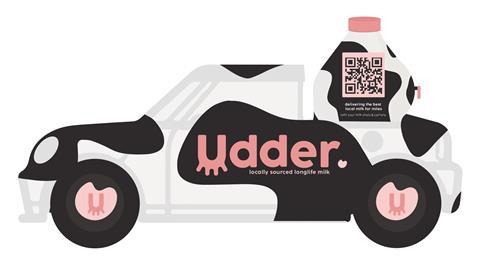
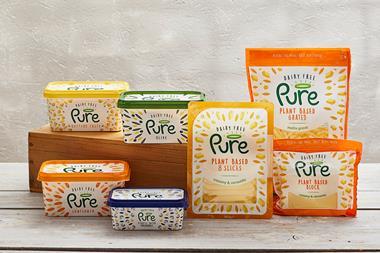
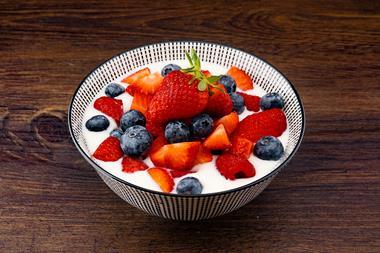

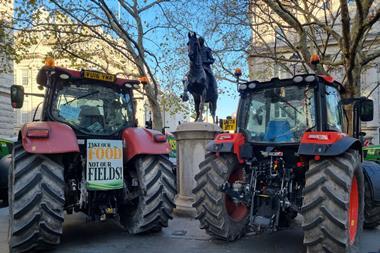

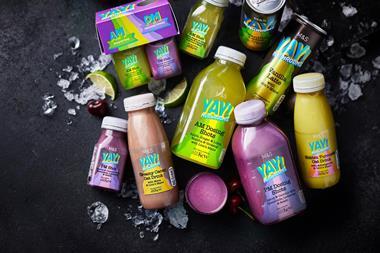

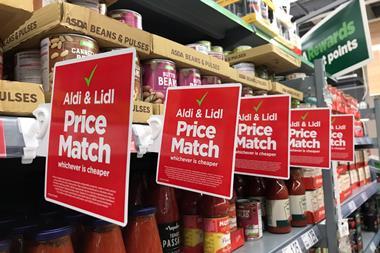
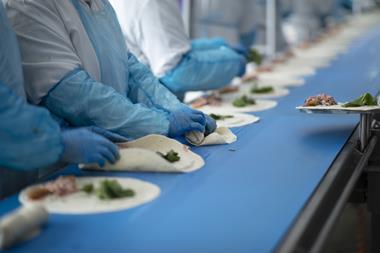


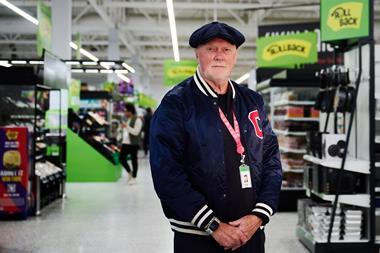
No comments yet